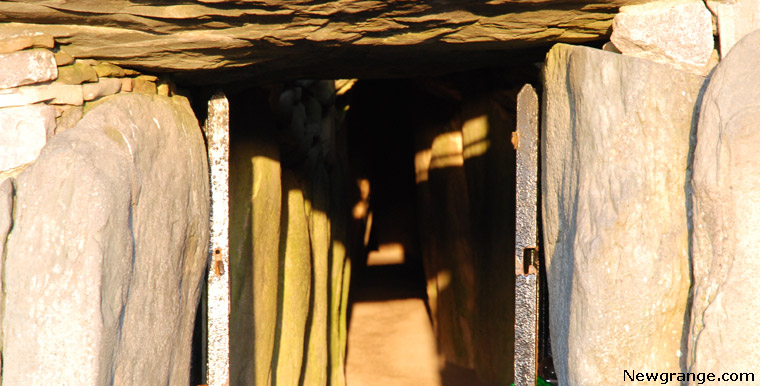Newgrange - Letters to the Editor
Printed in The Irish Times 29 June 1988Sir, It is good to see scientists proving beyond reasonable doubt, that Newgrange indeed has an astronomical function (June 21st). I hope this will help wean us from the inaccurate title of tomb, that has been given to these special structures. In recent years the term dolmen, with us since time immemorial, has been edited out of such books as Seán P. Ó Ríordáin's Antiquities of the Irish Countryside and replaced with the title "Portal tomb". This I feel is a definite step in the wrong direction.
Martin Brennan in his book The stars and the Stones in Part II Megalithic Observatories, details the discoveries of the astronomical alignments of the megalithic mounds at Dowth (Winter Solstice sunset) Loughcrew Cairn T (Spring and Autumnal Equinox's) Cairn L (Cross quarter days). I was fortunate to work with Brennan and have first hand experience in these discoveries. These along with other astronomical discoveries proved beyond doubt an active astronomical function. The term observatory, however, does not reveal them in their full light either.
Our group along with others have been collection an ever increasing body of information on these structures. The more we find out the more we realise that our ancestors had vastly more awareness in many fields than previously imagined. We still have much to learn/relearn in our study of the masterly system of interconnected ancient sacred sights including dolmen, standing stones, stone circles and mounds.
Undoubtedly enough is now known to be quite sure that there is no justification to continue to refer to Newgrange, other mounds and dolmens as tombs. This is not a particularly recent notion as evidenced from William Borlase's "The Dolmens of Ireland" (1897) page 638 "A dolmen wherever found is no mere tomb made to be closed for ever on the remains within or buried in a tumulus without approach being left to the central vault, or cell; it was a temple surely and truly as the temple Artemis at Eleusis, or as any of the cellae memoriae of pagans first and Christian afterwards."
The cruciform ground plan of Newgrange is repeated many times around the country and throughout the world in churches. To quote T.F. O'Rahilly in his "Early Irish History and Mythology" page 470 "Our earliest documentary allusion to Irish pagan beliefs occurs in St Patrick's 'Confessio' in a passage which may be paraphrased as follows:- The splendour of the material sun, which rises everyday at the bidding of god, will pass away, and those who worship it will go into dire punishment; whereas "the true sun of Christ' whom we, Christians worship shall endure for ever, and those who do his will shall abide with Him for ever." Here we have the evidence of an unimpeachable authority that the worship of the sun was a prominent feature in the pagan religion of fifth century Ireland.
When we come to publicly recognise Newgrange as more temple than tomb, we will be taking a significant step in the right direction.
Yours etc.,
Toby Hall
Stonelight Research Group,
10c Temple lane,
Dublin 2
EDITOR
Newgrange
July 1st
Sir, - It was decent of a couple of intrepid scientists from the Institute of Advanced Studies to "reveal" (June 21st) that Newgrange was built on a deliberate alignment with the rising sun, for religious reasons.
A little further study would reveal that half of the cathedrals in Europe were built the same way. I wonder what will dawn on them next? -
Yours, etc.,
GILLIES MACBAIN,
Cranagh Castle,
Templemore,
Co Tipperary.
Boyne Valley Private Day Tour
 Immerse yourself in the rich heritage and culture of the Boyne Valley with our full-day private tours.
Visit Newgrange World Heritage site, explore the Hill of Slane, where Saint Patrick famously lit the Paschal fire.
Discover the Hill of Tara, the ancient seat of power for the High Kings of Ireland.
Book Now
Immerse yourself in the rich heritage and culture of the Boyne Valley with our full-day private tours.
Visit Newgrange World Heritage site, explore the Hill of Slane, where Saint Patrick famously lit the Paschal fire.
Discover the Hill of Tara, the ancient seat of power for the High Kings of Ireland.
Book Now
Home
| Visitor Centre
| Tours
| Winter Solstice
| Solstice Lottery
| Images
| Local Area
| News
| Knowth
| Dowth
| Articles
| Art
| Books
| Directions
| Accommodation
| Contact


